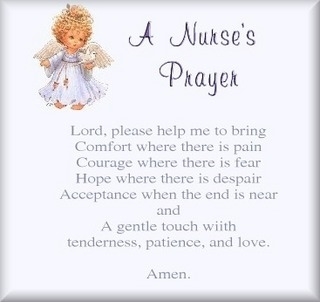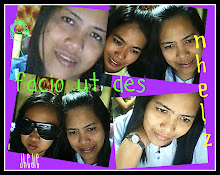
glitter-graphics.com
Nursing encompasses an art, a humanistic orientation, a feeling for the value of the individual, and an intuitive sense of ethics, and of the appropriateness of action taken.

Posted by nHeLia at 4:08 PM 25 comments
Posted by nHeLia at 12:32 AM 1 comments

Posted by nHeLia at 3:27 AM 0 comments
Posted by nHeLia at 8:39 AM 0 comments
Mr. Bart Ikero is a 58-year-old man who is scheduled for permanent pacemaker insertion as treatment for a tachydysrhythmia that doesn’t respond to medication therapy. He will have an endocardial implant. Answer the following questions based on your knowledge of pacemaker management (reference pages 700–705).
1. Mr. Bart Ikero’s pacemaker is set at 72 beats/minute. His heart rate is 76 beats/minute. Is this expected? (Yes/No) Explain the rationale for your answer.
2. Nursing care includes incision site assessment for three complications:
a.___________________________________________________________________
b.___________________________________________________________________
c.___________________________________________________________________
3. The most common postoperative complication is ____________, which can be prevented by ___________________________.
4. List six things about the pacemaker that must be noted on a patient’s chart:
a.___________________________________________________________________
b.___________________________________________________________________
c.___________________________________________________________________
d.___________________________________________________________________
e.___________________________________________________________________
f.____________________________________________________________________
5. Describe nursing interventions and expected outcomes that should be used to meet the three major goals of patient care.
Goals:
a.________________________________________________________________
b.________________________________________________________________
c.________________________________________________________________
Nursing interventions:
a.________________________________________________________________
b.________________________________________________________________
c.________________________________________________________________
Expected outcomes:
a.________________________________________________________________
b.________________________________________________________________
c.________________________________________________________________
6. List assessment criteria that should be used to determine whether expected outcomes of care are achieved.
Expected outcomes:
a. Freedom from infection
b. Adherence to a self-care program
c. Maintenance of pacemaker function
Assessment criteria:
a.________________________________________________________________
b.________________________________________________________________
Posted by nHeLia at 4:41 AM 46 comments
When it rain, it pours...
Eto ang nangyari sa last week nmin sa San Lazaro...
Hay buhay, kung kylan ba nman huling week ska pa panay ang ulan at baha.. kakaloka...
Pero, masaya na dn. Kz at last, wala kme rotation sa PTB Ward. O d b???
Eto pa isang masaya. Nakakita xla ng 2 rabies patients. Imagine that??? Hay swerte tlga.
Masaya din ang inyong abang lingkod sapagkat sa aqn natapat ang grupo na marunong makipagcooperate. Nag ward class sila. At ang suggestion q ay knilang sinunod (pero palpak lang ang handout kz baliktad,,, Hahahaha)... pero okey na dn. at least xla may meryenda. Ung grupo ni mam luisa, both 1 and 3, ala!!! Mantakin nyo un. at muntik pa xla d na kapag ward class e kz nman... basta...
To cut the long story short, Affiliation 2008 has ended. Not with a Bang but with rain.. lots of rain... mabuti na lang mabait ang mamang driver ng Baliwag... at xempre ang mga boys ang girls n tumulong... (slamat)...
hay naku..
basta magpost na nga k u ng LFD nyo.....
Ang hindi mag post, magkaka bulutong tubig...
Posted by nHeLia at 4:30 AM 8 comments
Posted by nHeLia at 5:59 AM 3 comments
kagaya ng naunang mga batch, ang orientation sa SLH at tunay na inaabangan. Hindi dahil sa mga experiences na kanilang makukuha kundi dhil sa 2 CI na makakasama nila ng isang linggo.
Ang araw ay nagsimulang maganda, first batch poh kme at napaaga ang aming pag-uwi sa dorm.
nakapagpahinga kme ng maayos, at nakakain ng fud na luto ni danggit.
kinagabihan, matapos nmin kumain at mabusog, kami ay naupo na upang mapakinggan ang hnandang report ng 2 studnt nurse. ang PTB.
bilang paghahanda sa kanilang duty sa TB ward, xla ay nabgyan ng advance info.
dumating ang araw sa PTB ward.. kmi ay di gaanong nahirapan. mababait ang aming mga pasyente at di kme natoxic. subalit ng matatapos na ang aming duty, kami ay pinakitaan ng balde baldeng hemoptysis. hay buhay!
ngunit subalit datapwat sa aming pag uwi, kme ay nagpasalamat at nakaraos kme ng isang araw muli.
Posted by nHeLia at 6:27 AM 10 comments

Posted by nHeLia at 3:27 AM 6 comments
Posted by nHeLia at 6:24 AM 30 comments
ABC's of Nursing
 | is for assessment. Nurses are great at assessing everything, e.g. patients, nursing care, each other, the work environment, and physicians. |
 | is for body, which becomes someone else's when one is admitted to the hospital. Nurses take care of the body, along with the mind and soul. |
 | is for charting, which is never ending. Student nurses need to be warned that when they are graduate nurses, they will probably have to chart on 10 different pieces of paper for every day - unless their hospitals use the other "C" word - computers. |
 | is for death, which nurses must face and work with, but should never give in to. |
 | is for endless, which is what nursing care activities mostly seem to be. |
 | is for finances, which is what keeps the hospitals open and the nurses employed. Most nurses know about hospital finances, especially when it impacts on the personal finances. |
 | is for goals. These are usually identified for the patient, but can be personal if the need arises. |
 | is for healthy, which nurses want to be because they don't want to be admitted to a hospital and have to be a patient. |
 | is for infection, also known as cystitis, which some researches claim nurses have more of because they never have time to go to the bathroom. |
 | is for joy, which nurses experience when their patients (both favorite and unfavorite) recover enough to go home. |
 | is for knowledge, which nurses have a lot of. They know about nursing, doctoring, diets, teaching, giving helping, caring facilitation, consulting, and fixing. They use most of it, so they try to keep getting it. |
 | is for laboratory reports, which have a tendency to show up on the wrong charts for the wrong patients at the wrong time, which nurses have to look out for constantly. |
 | is for movement, which nurses oversee so that patients either do or don't do, helping patients understand what and how to do or not do. |
 | is for needles. Nurses are concerned today because needles not only stick the patients; they may also stick the nurse with something that can be life threatening. |
 | is for orientation, which tells the new nurse that he or she is either going to fit or not fit into the hospital's culture. It is not too late to change your mind. |
 | is for priorities, which nurses must be great at setting whether it's patient care, preparing the operating room for surgery, or generating a budget. |
 | is for questions, which nurses answer a million of a day from patients, families, other members of the healthcare team, nursing colleagues, or administration. |
 | is for risk taking. Nurses take risks daily to attain the optimum care they think their patients need. |
 | is for surgery. While nurses don't do the cutting, they do the preparing, planning, assisting and teaching, which contributes to the outcome. |
 | is for teaching, which is an original major function of nursing. Since today there is a shortage of nurses and an abundance of physicians, many physicians are identifying teaching as a medical function, which nurses should be aware of in order to not lose it. |
 | is for uniform, which used to always be white for nurses on the units and scrubs for nurses in specialty areas. But today, nurses may wear scrubs or street clothes on the units and nurses in specialty areas are wearing jump suit cover-ups, or space suits, which is why name tags are required. |
 | is for values, which nurses and administrators often seem to have differences in. This is okay as they can be worked out in the decision-making process. |
 | is for walking, which nurses must be sure the ambulatory patients can do before they are discharged. It also can be the miles that nurses walk each day just doing their job. (Some have guesstimated 20 miles a day on an average, busy unit.) |
 | is for x-rays, which nurses must be sure they don't get too much of, in order to ensure there are enough new little nurses to carry on the profession. |
 | is for you, the most important person in nursing. The heart of nursing is giving of yourself, but be sure not to give it all away and have to leave nursing. |
 | is for zoo, which is where nurses often say they work, but then, doesn't everybody? |
Posted by nHeLia at 4:35 AM 0 comments


